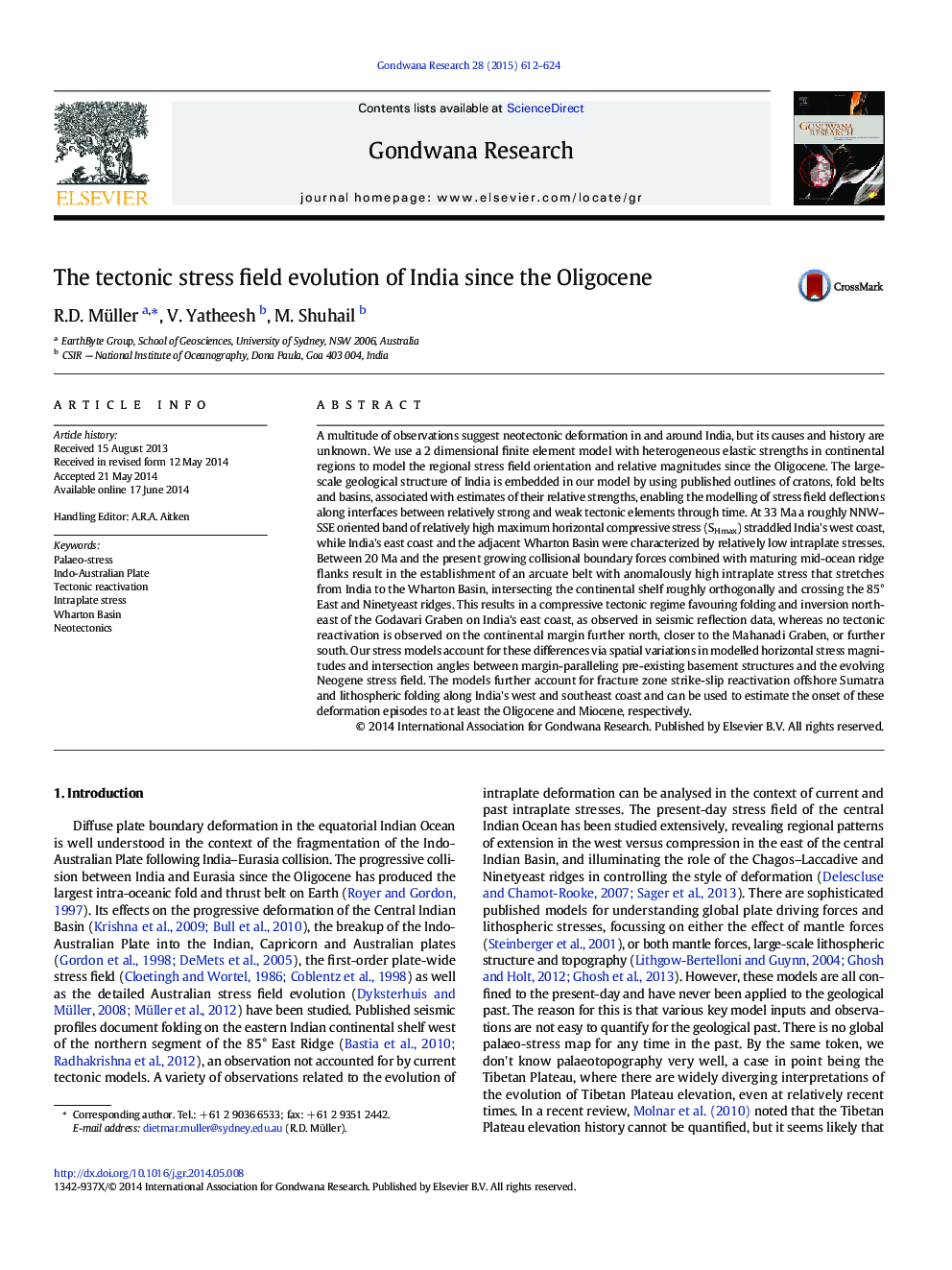| کد مقاله | کد نشریه | سال انتشار | مقاله انگلیسی | نسخه تمام متن |
|---|---|---|---|---|
| 4726879 | 1356350 | 2015 | 13 صفحه PDF | دانلود رایگان |
• We model India's palaeo-stress field from the Oligocene to the present.
• After 20 Ma a belt of anomalously high stress intersects the eastern Indian margin.
• The model explains Neogene tectonic reactivation in and around India.
A multitude of observations suggest neotectonic deformation in and around India, but its causes and history are unknown. We use a 2 dimensional finite element model with heterogeneous elastic strengths in continental regions to model the regional stress field orientation and relative magnitudes since the Oligocene. The large-scale geological structure of India is embedded in our model by using published outlines of cratons, fold belts and basins, associated with estimates of their relative strengths, enabling the modelling of stress field deflections along interfaces between relatively strong and weak tectonic elements through time. At 33 Ma a roughly NNW–SSE oriented band of relatively high maximum horizontal compressive stress (SHmax) straddled India's west coast, while India's east coast and the adjacent Wharton Basin were characterized by relatively low intraplate stresses. Between 20 Ma and the present growing collisional boundary forces combined with maturing mid-ocean ridge flanks result in the establishment of an arcuate belt with anomalously high intraplate stress that stretches from India to the Wharton Basin, intersecting the continental shelf roughly orthogonally and crossing the 85° East and Ninetyeast ridges. This results in a compressive tectonic regime favouring folding and inversion northeast of the Godavari Graben on India's east coast, as observed in seismic reflection data, whereas no tectonic reactivation is observed on the continental margin further north, closer to the Mahanadi Graben, or further south. Our stress models account for these differences via spatial variations in modelled horizontal stress magnitudes and intersection angles between margin-paralleling pre-existing basement structures and the evolving Neogene stress field. The models further account for fracture zone strike-slip reactivation offshore Sumatra and lithospheric folding along India's west and southeast coast and can be used to estimate the onset of these deformation episodes to at least the Oligocene and Miocene, respectively.
Figure optionsDownload as PowerPoint slide
Journal: Gondwana Research - Volume 28, Issue 2, September 2015, Pages 612–624
